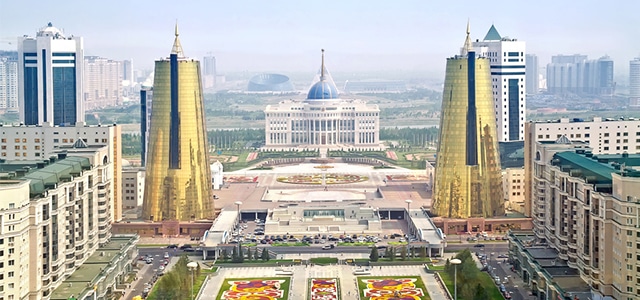FRONTIER MARKETS REPORT | KAZAKHSTAN

Kazakhstan is rife with investment opportunities, but companies must be aware of the country’s regional commitments and business climate.
Kazakhstan has attracted foreign direct investments of $129.5 billion over the past 22 years, according to the US State Department. It derives much of its wealth from energy revenues, but is looking to diversify its investment flows.
That important goal is far from being reached. Anna Walker, head of analysis for Europe and CIS at consultancy Control Risks, sees a gap between theory and practice. “There is an awareness that they do need to prepare for when the oil runs out…[but] they haven’t made much progress in diversifying away from oil and gas,” she says.
FDI opportunities abound in sectors such as manufacturing, consumer goods and agriculture, which have assumed greater importance since Kazakhstan joined the Eurasian Customs Union (whose members are Kazakhstan, Russia and Belarus) in 2010. CU membership creates a large market for manufacturers and consumer goods distributors, Walker explains.
The government also wants more diversification in its investors, although many of the world’s developed nations have a greater or lesser stake there. Carole Nakhle, an energy economist and the founder and director of London-based consulting firm Crystol Energy, says the three largest players (Western, Chinese and Russian companies) have marked out their investment turf. Western firms have generally targeted oil and gas, while Chinese investors have pursued broader economic sectors such as infrastructure. The Russians, Nakhle says, have favored the banking sector.
Kazakhstan offers what Nakhle calls a “very sophisticated infrastructure for investors”: an educated workforce, tax incentives, ten special economic zones and the waiving of visa requirements for visitors from most developed nations on brief visits. As an exercise in image-building, it also has an ongoing contract with Tony Blair Associates, the consulting company set up by the former UK prime minister.
But pursuing opportunities in Kazakhstan presents a few challenges—not least Kazakhstan’s membership in the Customs Union. The State Department says that as a condition of membership, Kazakhstan nearly doubled import tariffs and introduced annual tariff-rate quotas on poultry, beef and pork. That underscored Russia’s influence and left Western exporters frustrated about the limitations and the way in which they were calculated.
Investors should also keep in mind the relationship between the Russian ruble and Kazakh tenge, Walker notes. As the ruble continues depreciating, the tenge could also depreciate because of the close economic and political links between the two countries. The National Bank of Kazakhstan had propped up the tenge but found that the ruble’s depreciation made it increasingly uncompetitive, and in February allowed it to depreciate by 19%. Fluctuations in these currencies could have an impact on operational costs, and the relationship between them and the US dollar could affect net repatriation of funds.
In addition, there are quotas for local participation in goods, services and employees, as well as time-consuming layers of bureaucracy. Walker notes: “You have to go through quite a lot of paperwork to get things done.”
VITAL STATISTICS |
|---|
|
Location: Central Asia/Eastern Europe |
|
Neighbors: Russia, China, Turkmenistan, Uzbekistan, Kyrgyzstan |
|
Capital city: (Since 1998) Astana (renamed from Akmola) |
|
Population: 17,948,816 (Est. July 2014) |
|
Official language: Kazakh – State language |
|
GDP per capita (2013): $13,172 |
|
GDP growth (2013): 6% with expectations of a |
|
Inflation (2013): 5.8%—expected to continue rising |
|
Currency: Tenge |
|
Investment promotion agency: Kaznex Invest |
|
Investment incentives available? Exemption from customs duties, In-kind grants, Tax exemption, Reimbursements |
|
Ease of Doing Business rank: 104 out of 189 (2013) |
|
Corruption Perceptions Index rank: 140 |
|
Political risk: President is aging, with no clear heir apparent. Possible pressures on Kazakhstan from Russia. |
|
Security risk: Some jihadist protests in 2011 and 2012. Located between Russia and China. |
PROS |
|---|
|
General political stability |
|
Current government has a mandate to improve the investment climate |
|
Kazakhstan’s status as host of Expo 2017 projected to bring economic benefits |
|
A new Industrial-Innovative Development program is scheduled to run from 2015-2019 |
CONS |
|---|
|
Continuing fallout from the financial crisis |
|
GDP growth slowing this year |
|
Challenges to contractual rights, vague and contradictory legal provisions |
|
Corruption in judiciary, police, customs, land registration, licensing, and construction projects |
Sources: BBC.com, Carnegie Endowment for International Peace, International Monetary Fund, Kaznex Invest, State Department, Official Site of the President of the Republic of Kazakhstan, Transparency International, World Bank
For more information on Kazakhstan, check out our Country Economic Reports.



